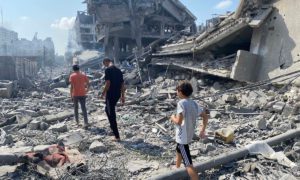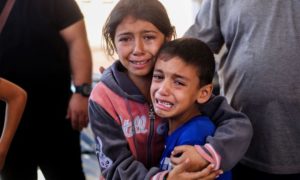Jammu: The Rohingyas, a stateless ethnic group loathed by many of Myanmar’s Buddhist majority, were forced to leave their homes after a bloody crackdown by the army.
Many came to India, with nothing but the clothes that they were wearing, and with horrifying stories of rape, torture and murder.
The last big displacement of the Rohingyas was in 2012, when a large number of them arrived in India.
The UNHCR says approximately 14,000 Rohingya are spread across six locations in India — Jammu, Nuh in Haryana’s Mewat district, Delhi, Hyderabad, Jaipur and Chennai.
It has given Refugee Status certificates to approximately 11,000 Rohingyas in India; the remaining 3,000 are “asylum seekers”.
Several Rohingya families — the majority with United Nations High Commissioner for Refugees (UNHCR) cards and some without papers — have found Jammu a safe haven till now.
But the Govt. of India is planning to deport, what it puts the number at, 40,000 Rohingya Refugees, to Myanmar at a time when the Myanmar army and the government is involved in persecution, killing and burning Rohingya villages.
“It is better that they kill us here rather than deporting us back to hell. Are we going to take our children back to that prison where we have once escaped from,” asks Maryam, who runs a small shop in the colony.
Amidst all this, the Rohingya children are caught in the line of fire.
I met the children living in the Jammu Refugee camp and tried to capture the grim realities of these Refugee Kids.
Living in extreme poverty with lack of the basic facilities, the adults make a living by working as labourers in the nearby areas. There are no educational institutions in the colony, except a Madrassa and one elementary school run by an NGO.
Many Children start working at a young age, and girls get married at the age of 12-14. Despite all these difficulties, their was calm and no fear of deportation. This has changed recently.
The Rohingyas are living under constant fear of deportation since the Indian Govt. has announced that they are a threat to the National Security and should be deported.
In the present condition, fear and uncertainty looms over the lives of these refugee children.

Noor stands in his jhuggi, he accidently fell into an oil pan and burnt the right portion of his face including the skull. The medical facilities are a distant dream for Rohingya Kids. (FPK Photo/Sajad Rafeeq)
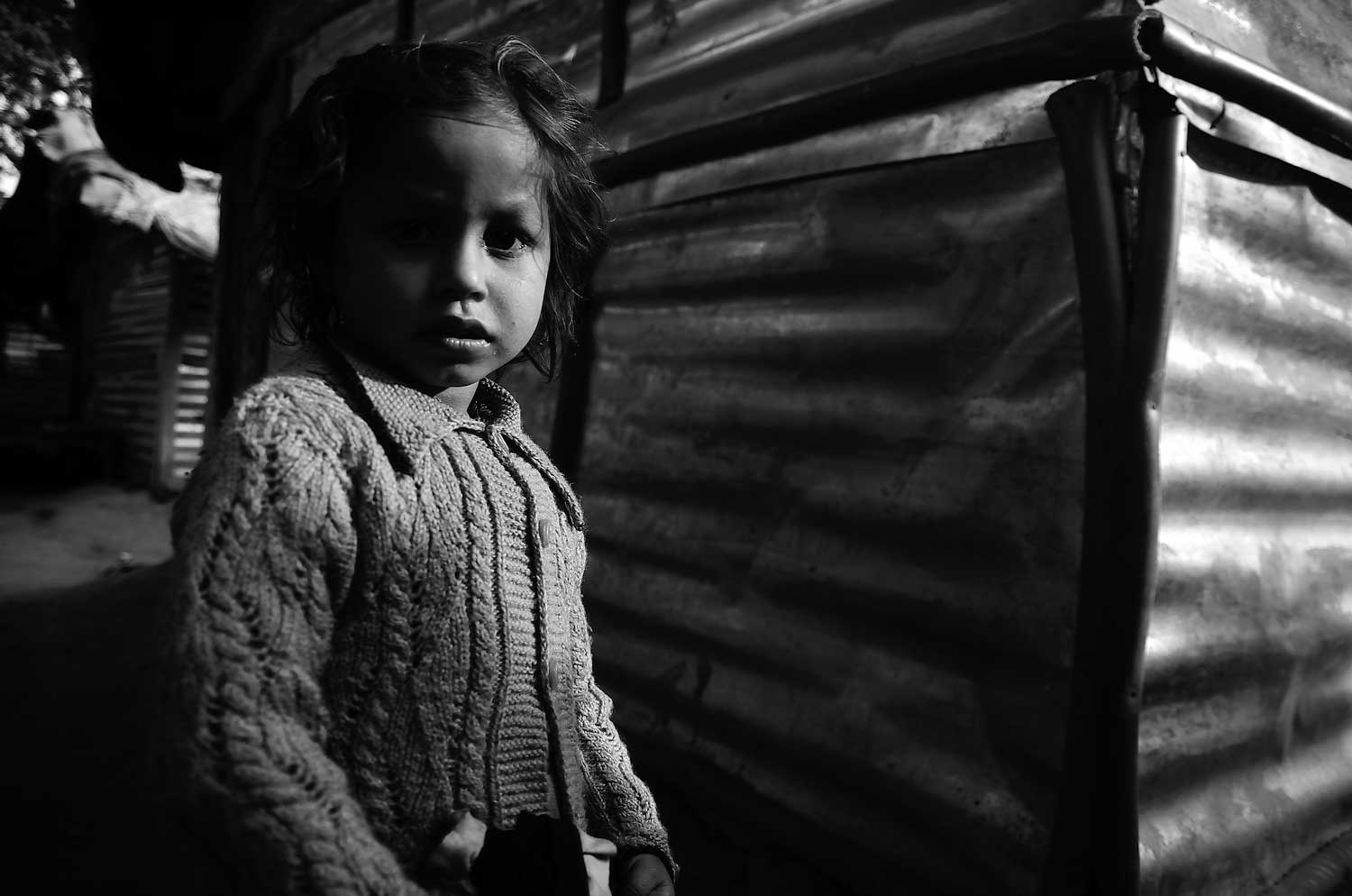
Iqra, stands near the entrance of their colony in Jammu. They live on rented plots in their hutments which they call jhuggis. Each jhuggi owner has to pay from 700-1000 Rs monthly rent to the landlord. (FPK Photo/Sajad Rafeeq)
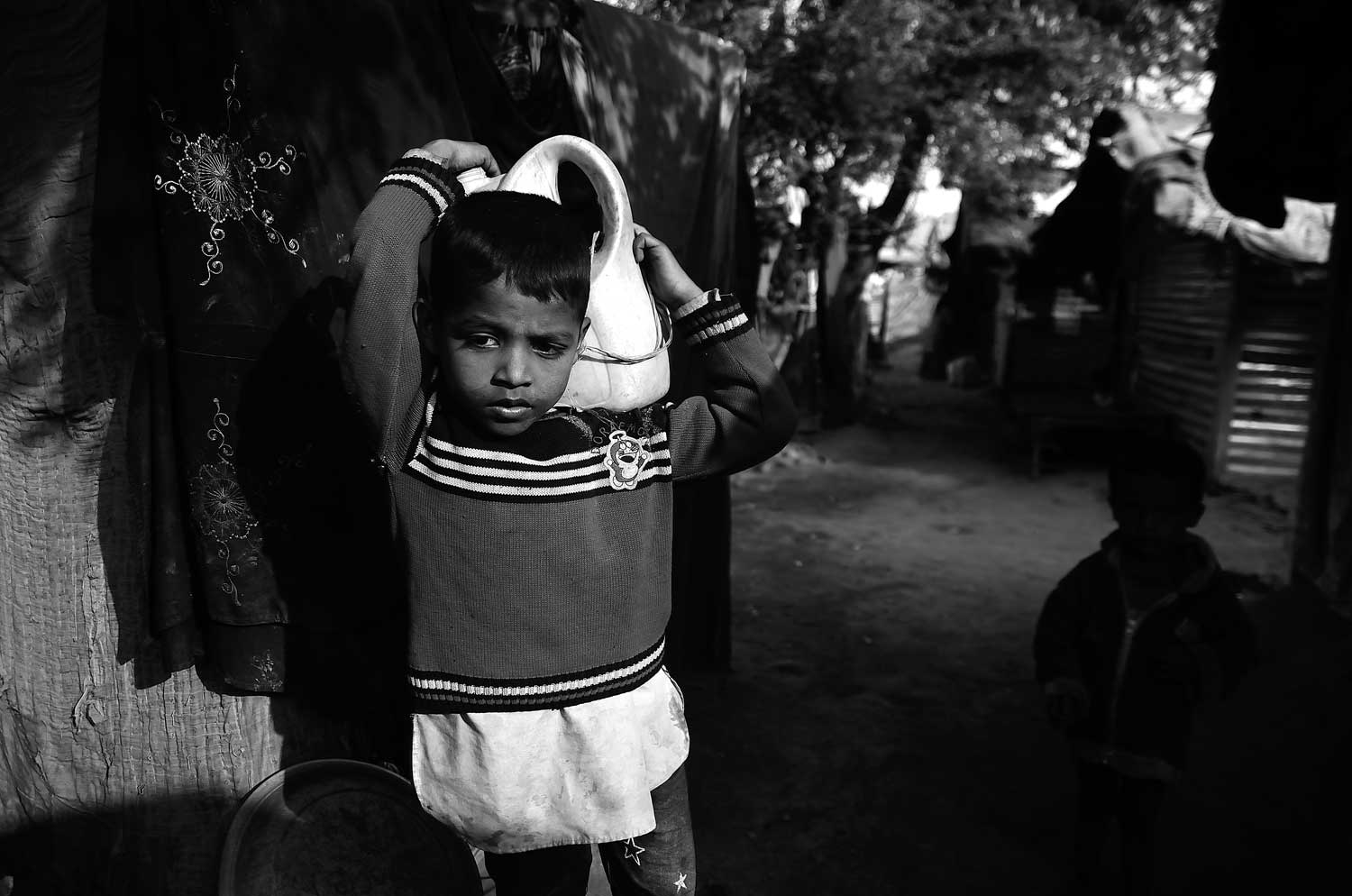
Abdul carries water can filled from a public tap. The Rohingyas living in Jammu lack the basic amenities of health and hygiene. (FPK Photo/Sajad Rafeeq)

Shubnam cries while I was taking her picture. The Rohingya kids try to avoid contact with the local people who many a times are hostile towards them. (FPK Photo/Sajad Rafeeq)
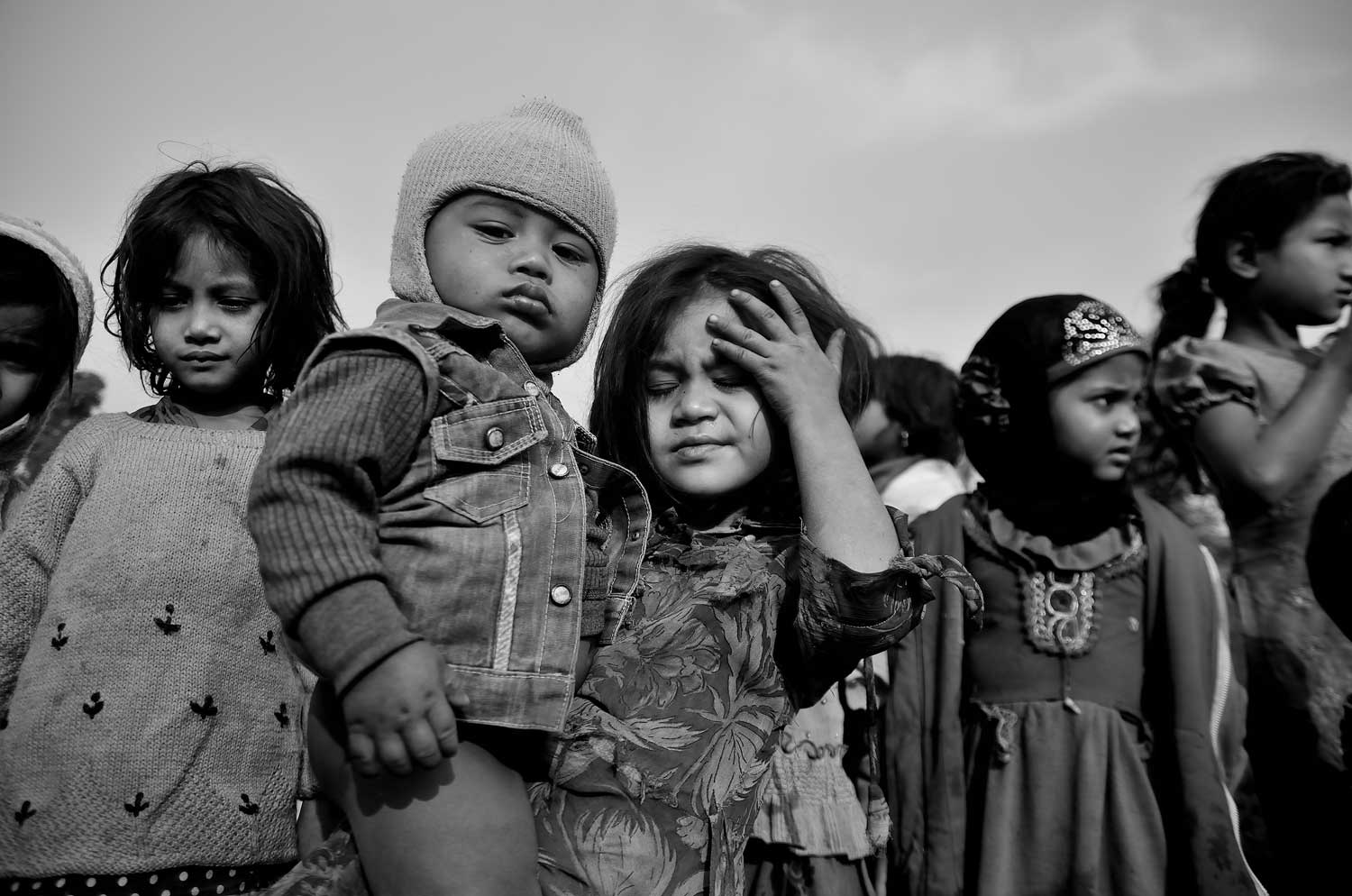
Tahira 12 holds her brother while her mother went to fetch water from the public tap. Tahira fled with her parents during 2012 when they were displaced following violence in their homeland, Myanmar. (FPK Photo/Sajad Rafeeq)
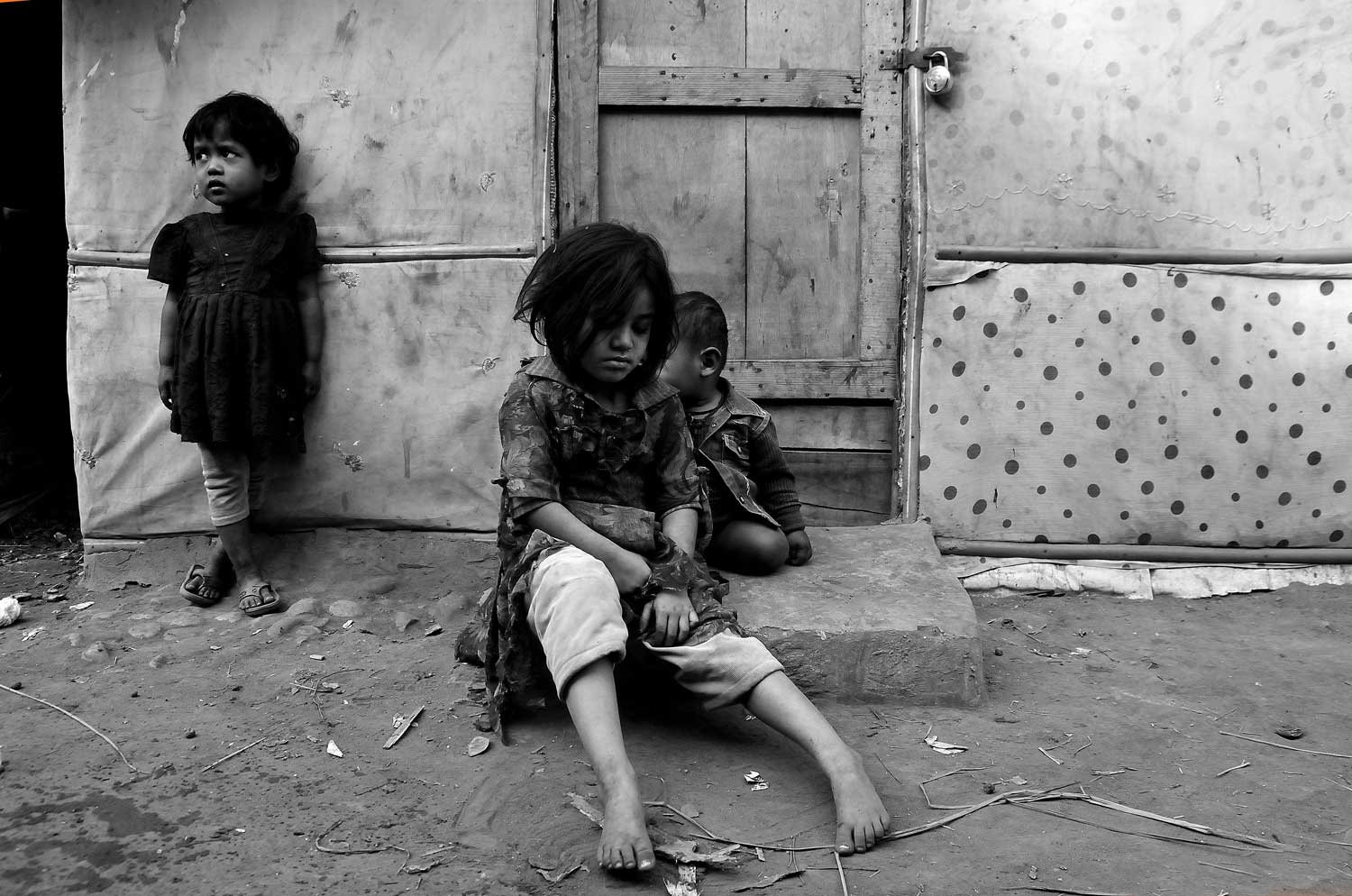
Tahira sits outside her Jhuggi with her siblings as the girls mostly remain indoors and learn cooking and other household chores at a very tender age. (FPK Photo/Sajad Rafeeq)
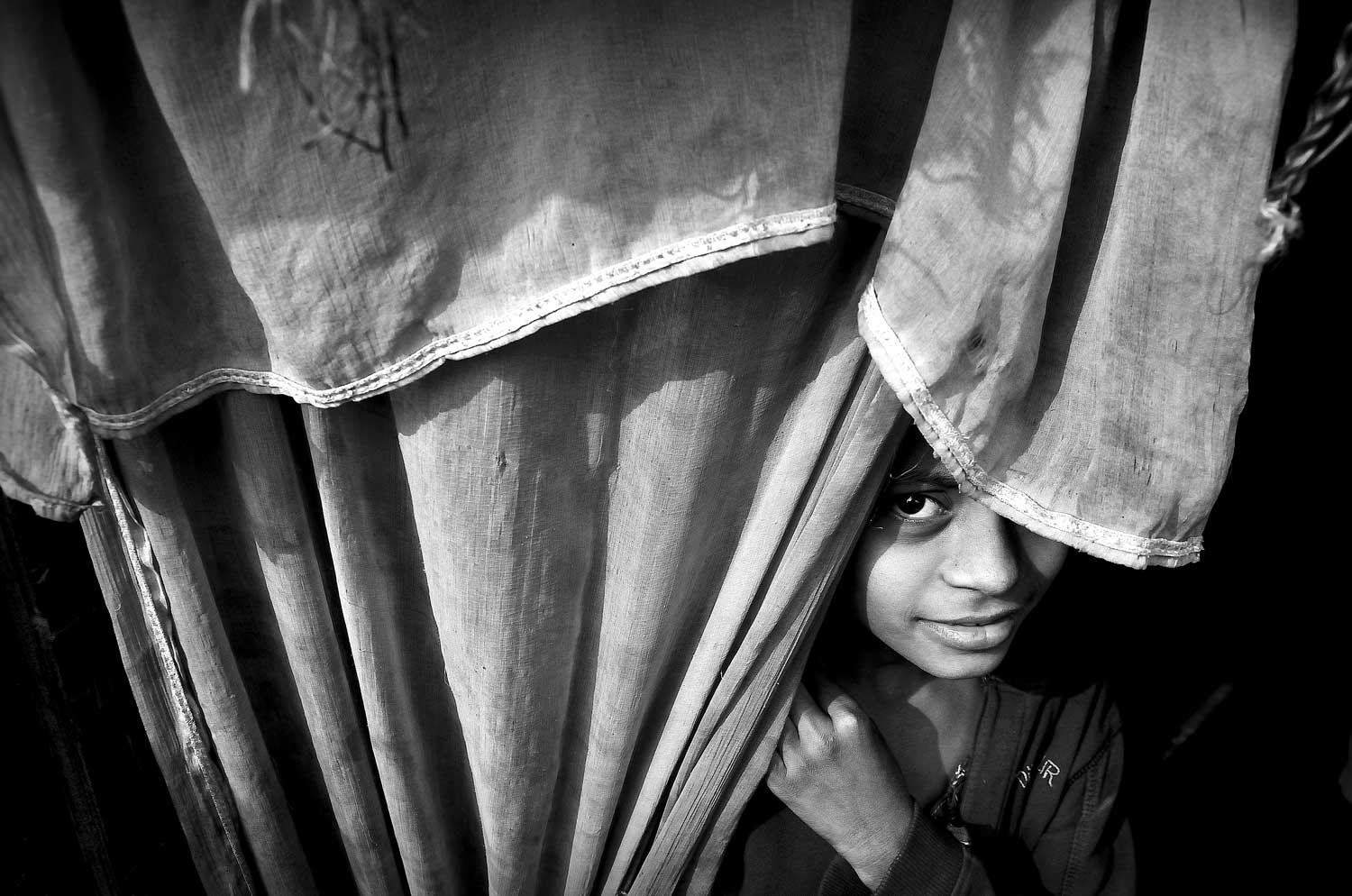
Tuhara guards her jhuggi near the entrance covered by a curtain. The girls mostly stay at home and lack the basic education as very few girls go to the school and most of them leave it in the early classes. (FPK Photo/Sajad Rafeeq)
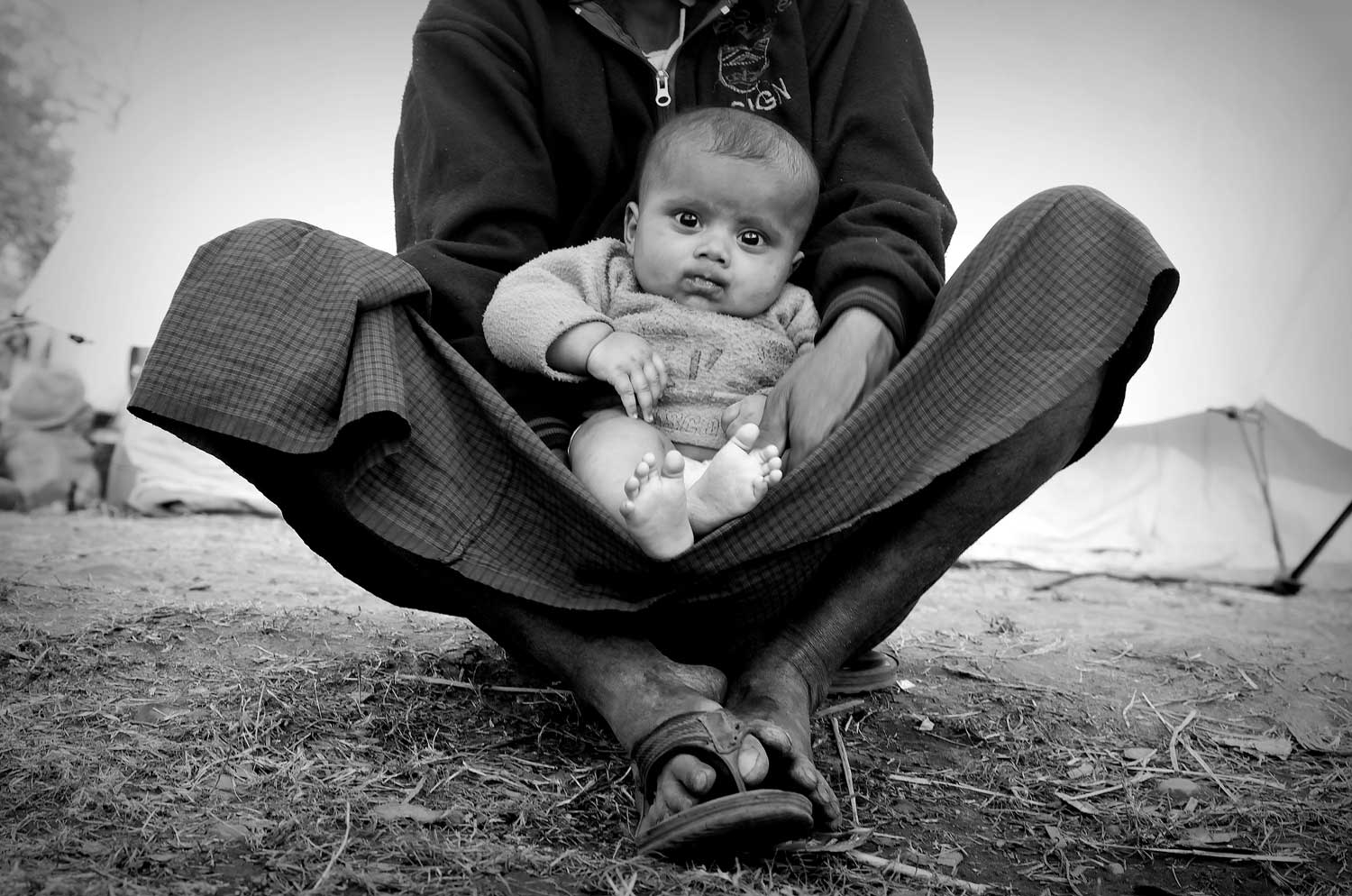
Bashir babysits his 1 year old baby outside a jhuggi in the outskirts of Jammu after a fire burnt some 40 jhuggis in which 3 people including a child died. (FPK Photo/Sajad Rafeeq)
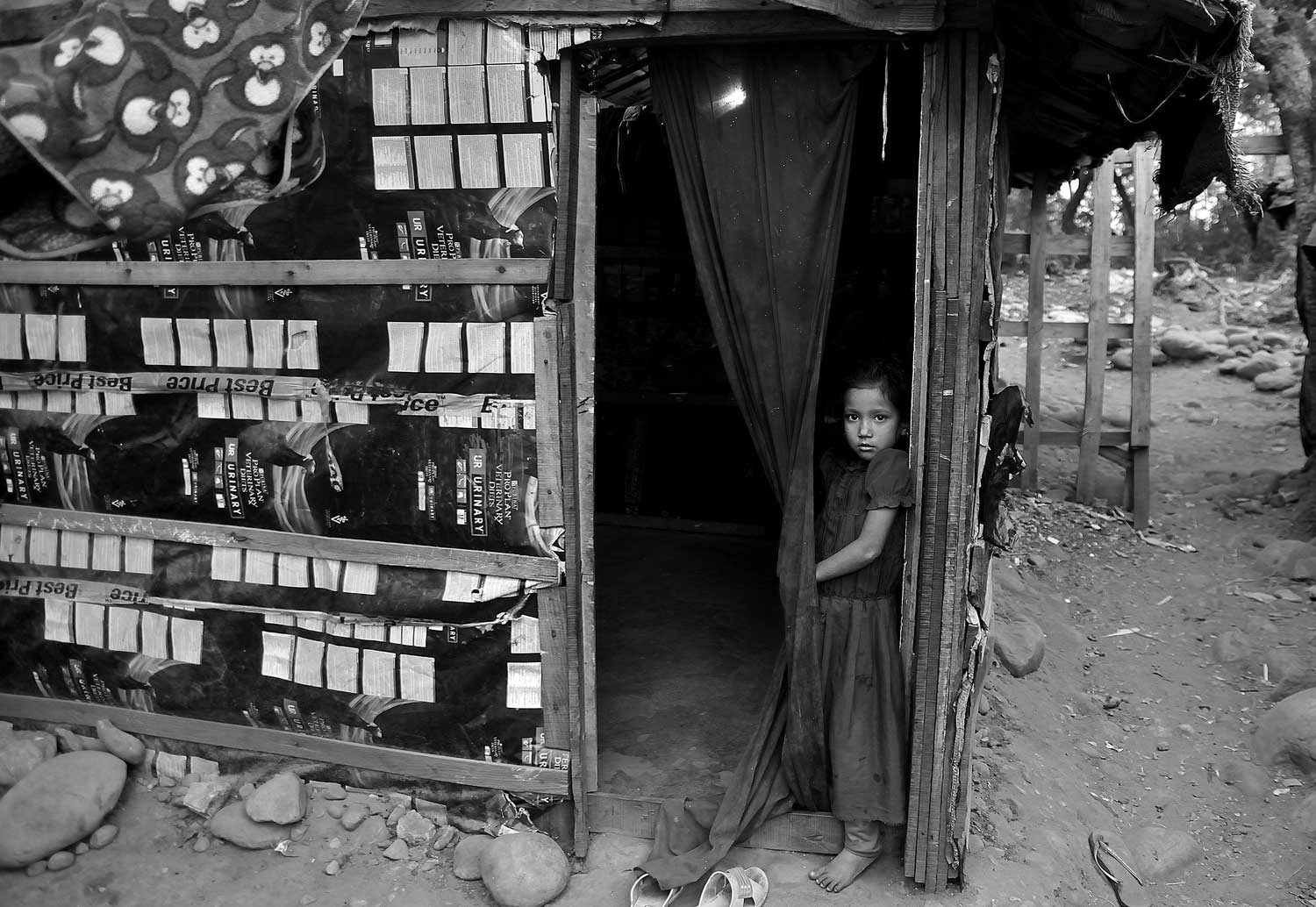
Rutba stands by the entrance of her jhuggi, unlike boys the girls mostly remain outdoors. The females are horrified by the tales of rapes and molestation back in their homeland. (FPK Photo/Sajad Rafeeq)
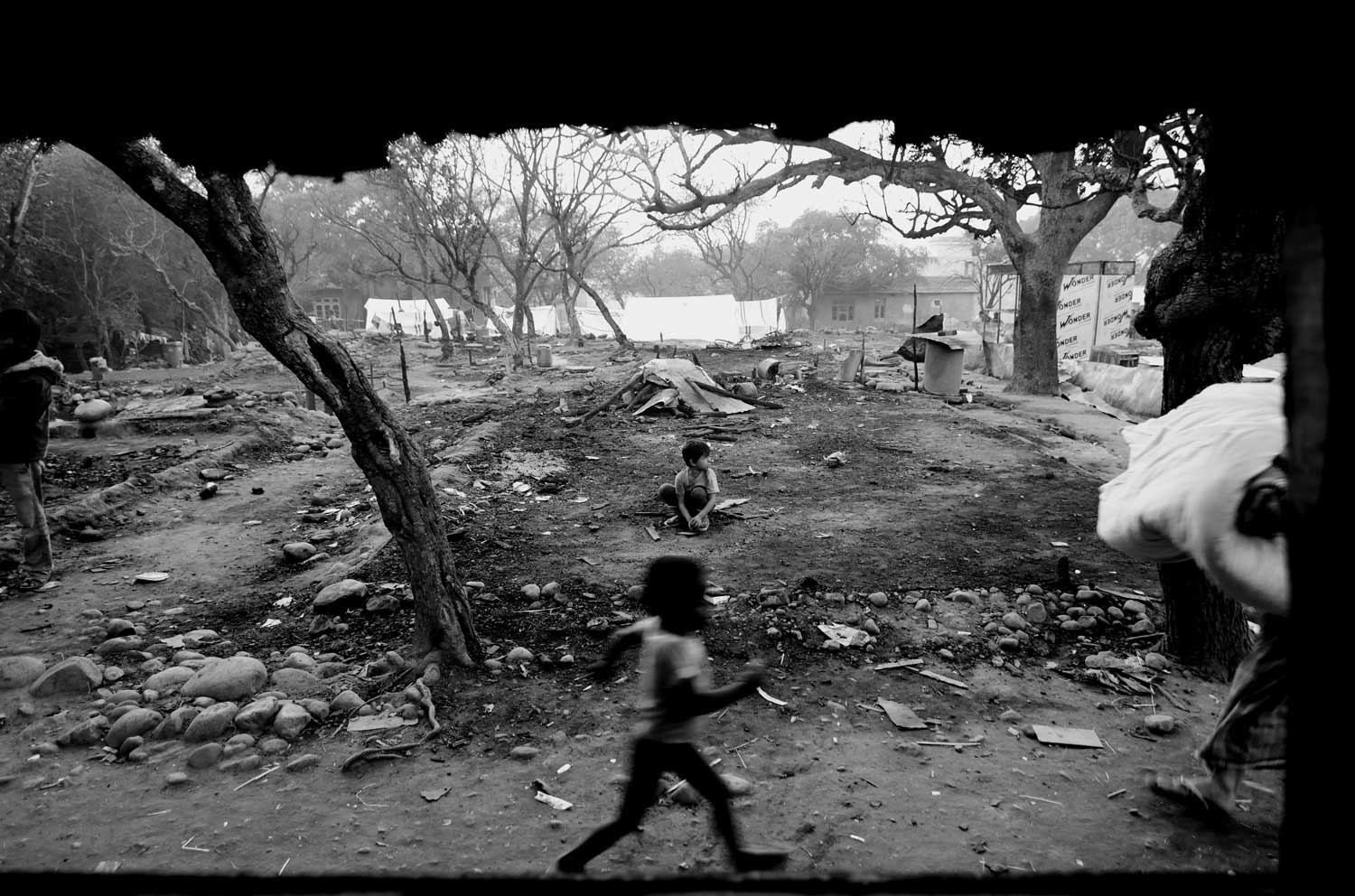
Rohingya Kids play near the half burnt jhuggi in the outskirts of Jammu. (FPK Photo/Sajad Rafeeq)
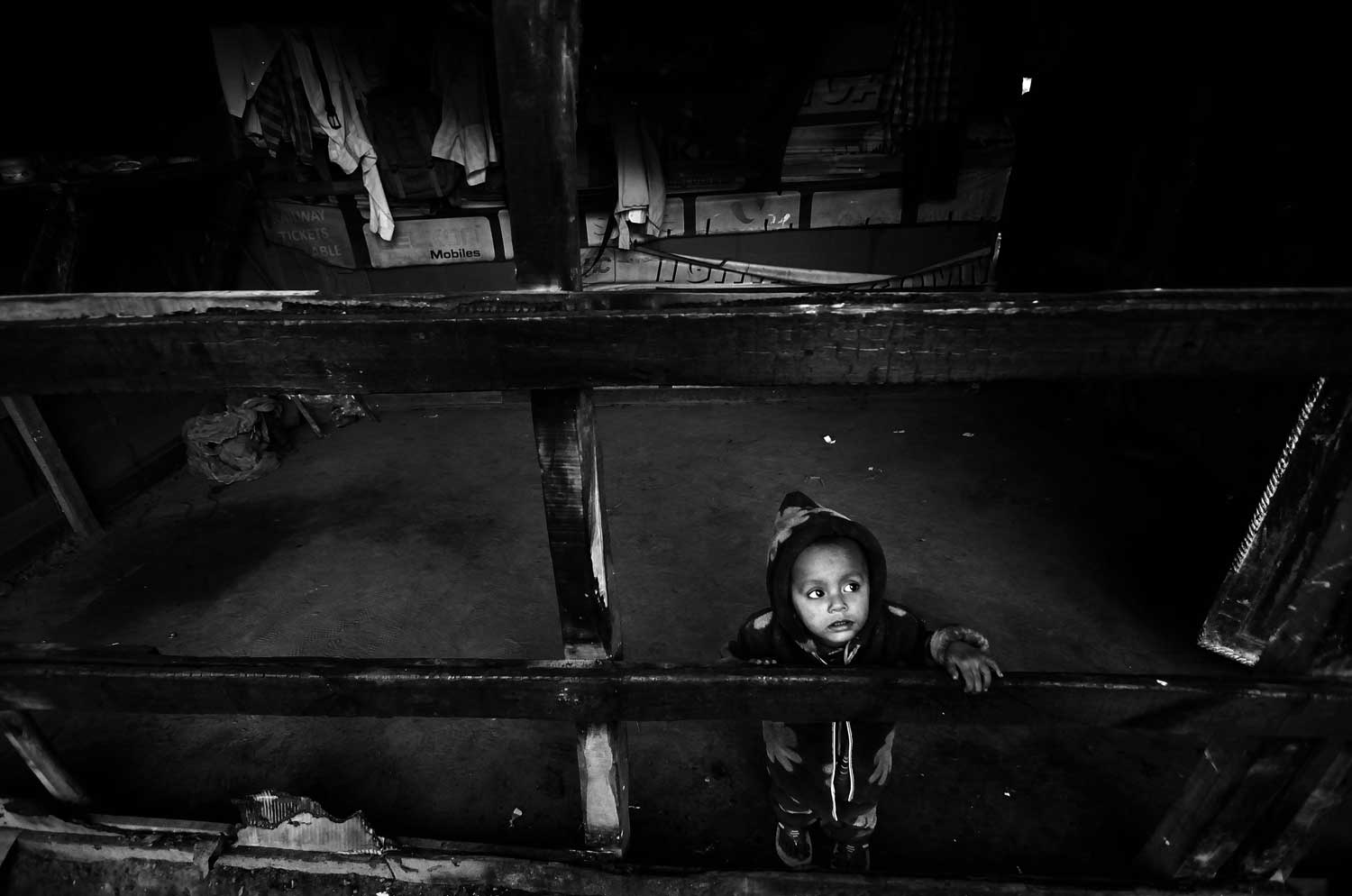
A Rohingya child stands near his burnt jhuggi after a fire destroyed 4o jhuggis killing 3 people incuding a child. (FPK Photo/Sajad Rafeeq)
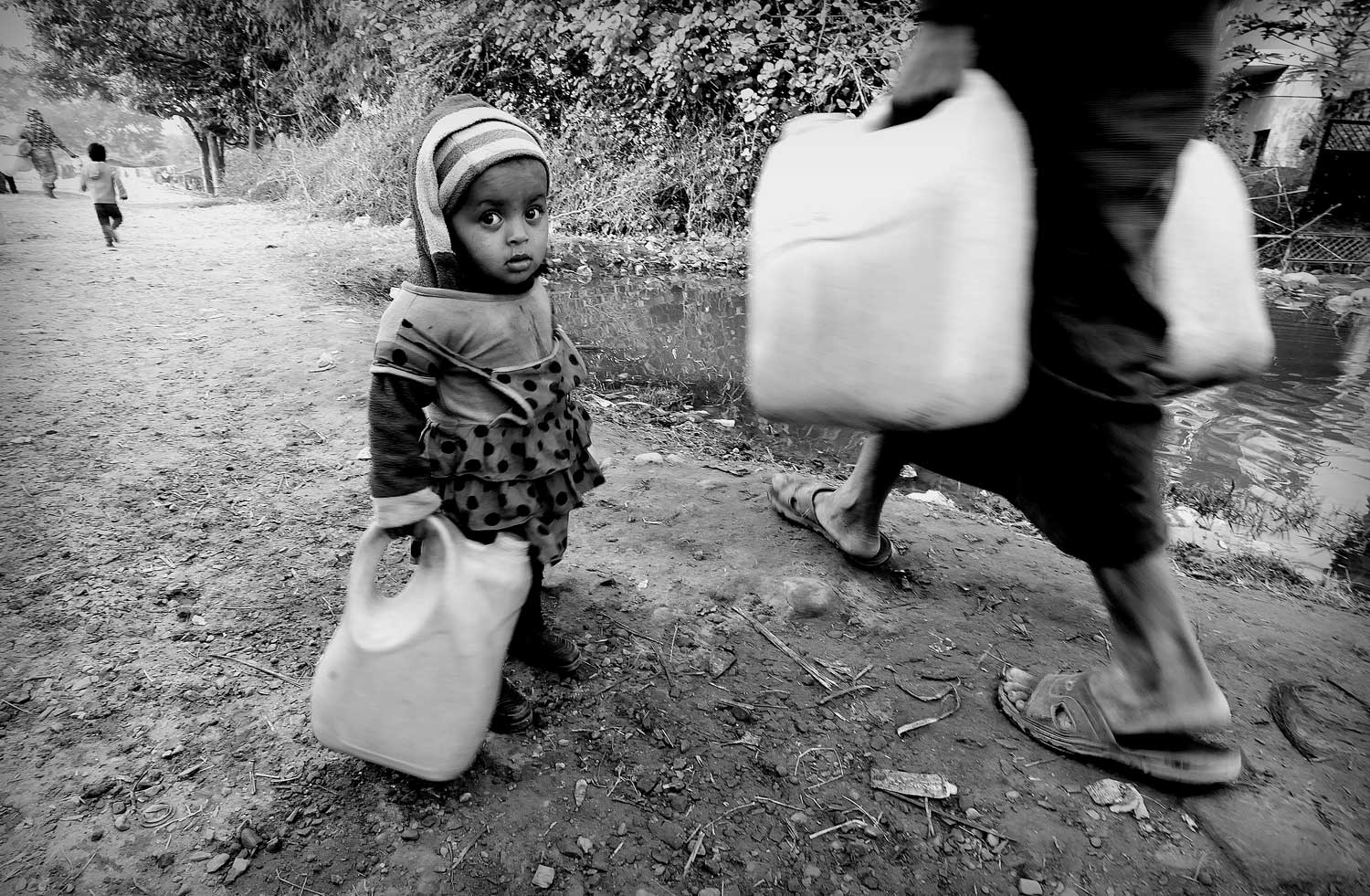
Ruby 3 yrs old carries empty water cans to help her mother fetch water from a public tap. (FPK Photo/Sajad Rafeeq)
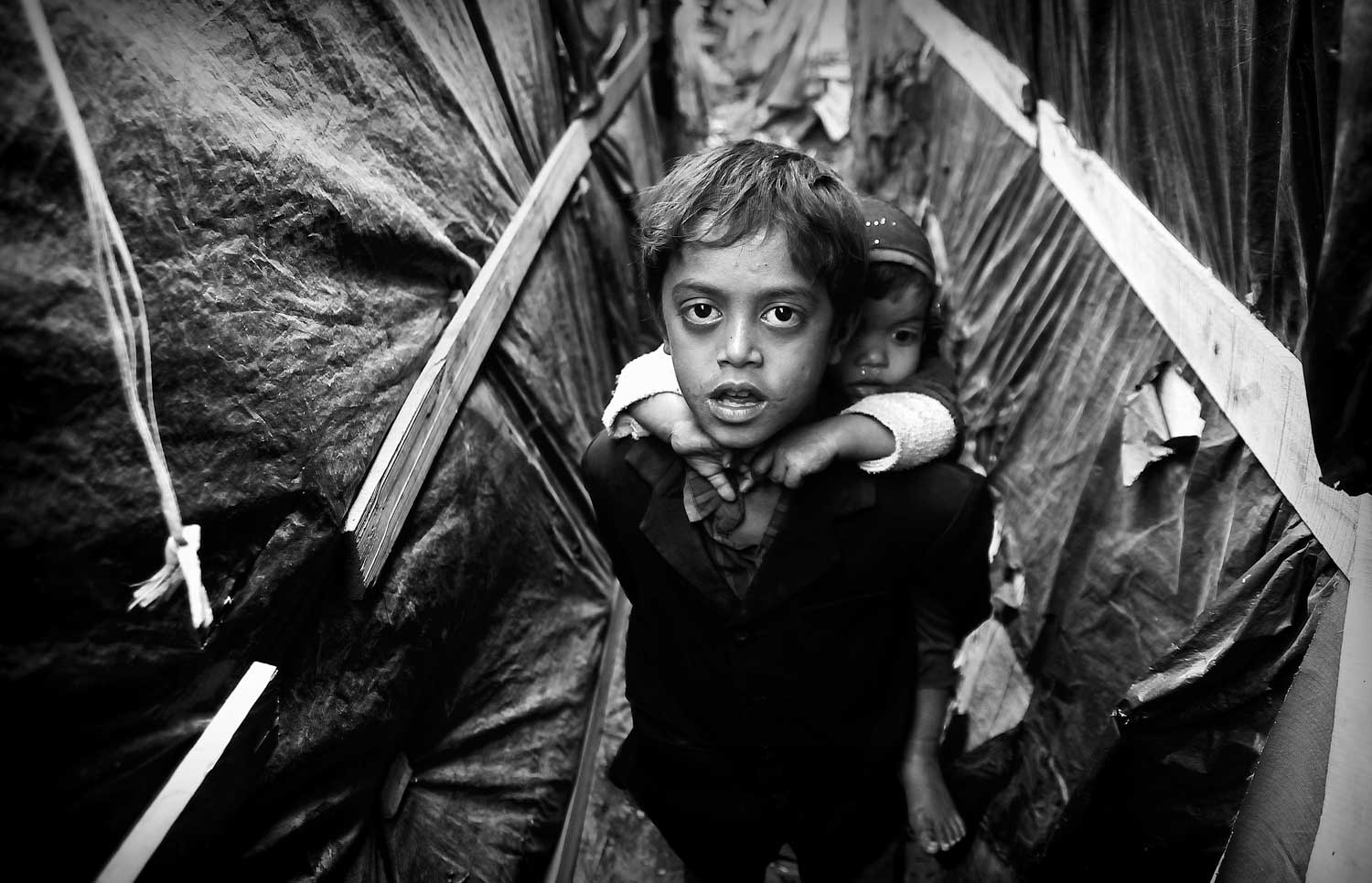
Rashid Carries her younger sister and takes her around the colony. The Rohingya kids remain inside their colony most of the times as they try to avoid contact with the local people who many a times are hostile towards them. (FPK Photo/Sajad Rafeeq)

Rahim ,9 yrs old left school to help his father who runs a fish business in the camp. The education facilities are just not enough to provide education to all the children living in the camp. (FPK Photo/Sajad Rafeeq)
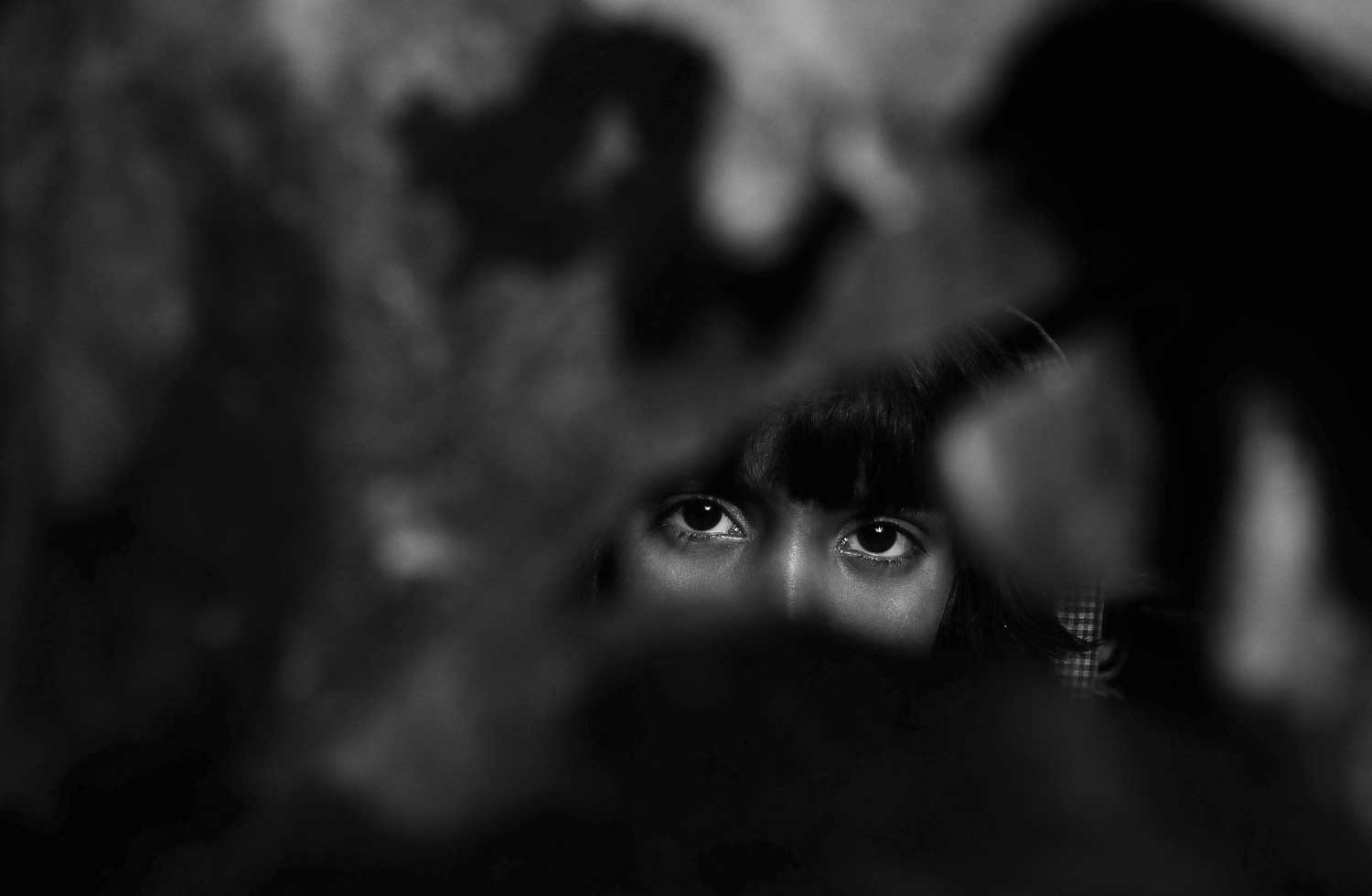
A Rohingya girls peeps through the polythene cover of the jhuggis. The jhuggis are covered with polythene sheets, old clothes or flex materials from boards etc. (FPK Photo/Sajad Rafeeq)
Sajad Rafeeq is an award winning freelance photographer based in Srinagar, Kashmir. A civil engineer by profession and a passionate street and travel photographer, Rafeeq’s work has been featured in the National Geographic.





